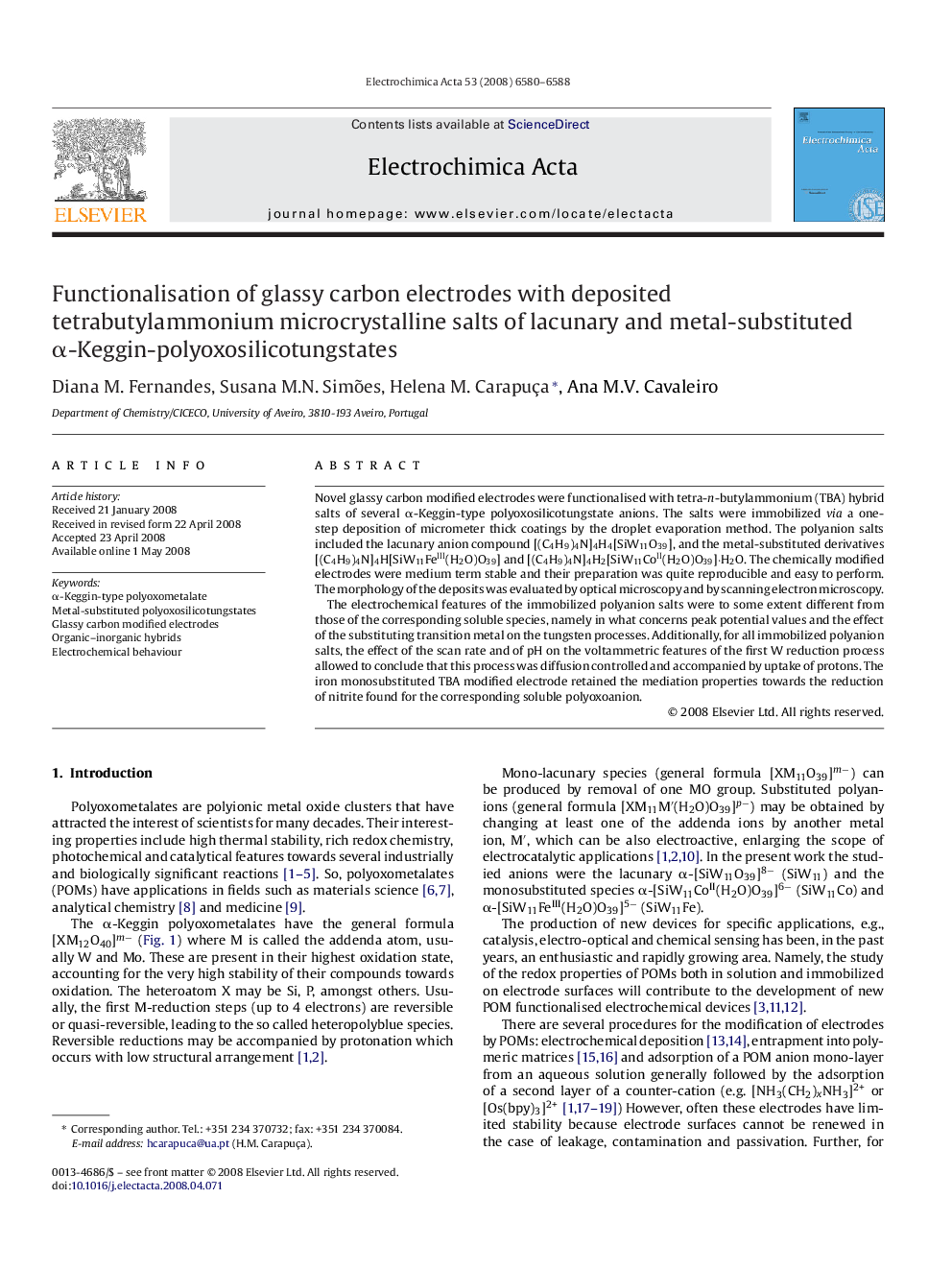| Article ID | Journal | Published Year | Pages | File Type |
|---|---|---|---|---|
| 195297 | Electrochimica Acta | 2008 | 9 Pages |
Novel glassy carbon modified electrodes were functionalised with tetra-n-butylammonium (TBA) hybrid salts of several α-Keggin-type polyoxosilicotungstate anions. The salts were immobilized via a one-step deposition of micrometer thick coatings by the droplet evaporation method. The polyanion salts included the lacunary anion compound [(C4H9)4N]4H4[SiW11O39], and the metal-substituted derivatives [(C4H9)4N]4H[SiW11FeIII(H2O)O39] and [(C4H9)4N]4H2[SiW11CoII(H2O)O39]·H2O. The chemically modified electrodes were medium term stable and their preparation was quite reproducible and easy to perform. The morphology of the deposits was evaluated by optical microscopy and by scanning electron microscopy.The electrochemical features of the immobilized polyanion salts were to some extent different from those of the corresponding soluble species, namely in what concerns peak potential values and the effect of the substituting transition metal on the tungsten processes. Additionally, for all immobilized polyanion salts, the effect of the scan rate and of pH on the voltammetric features of the first W reduction process allowed to conclude that this process was diffusion controlled and accompanied by uptake of protons. The iron monosubstituted TBA modified electrode retained the mediation properties towards the reduction of nitrite found for the corresponding soluble polyoxoanion.
